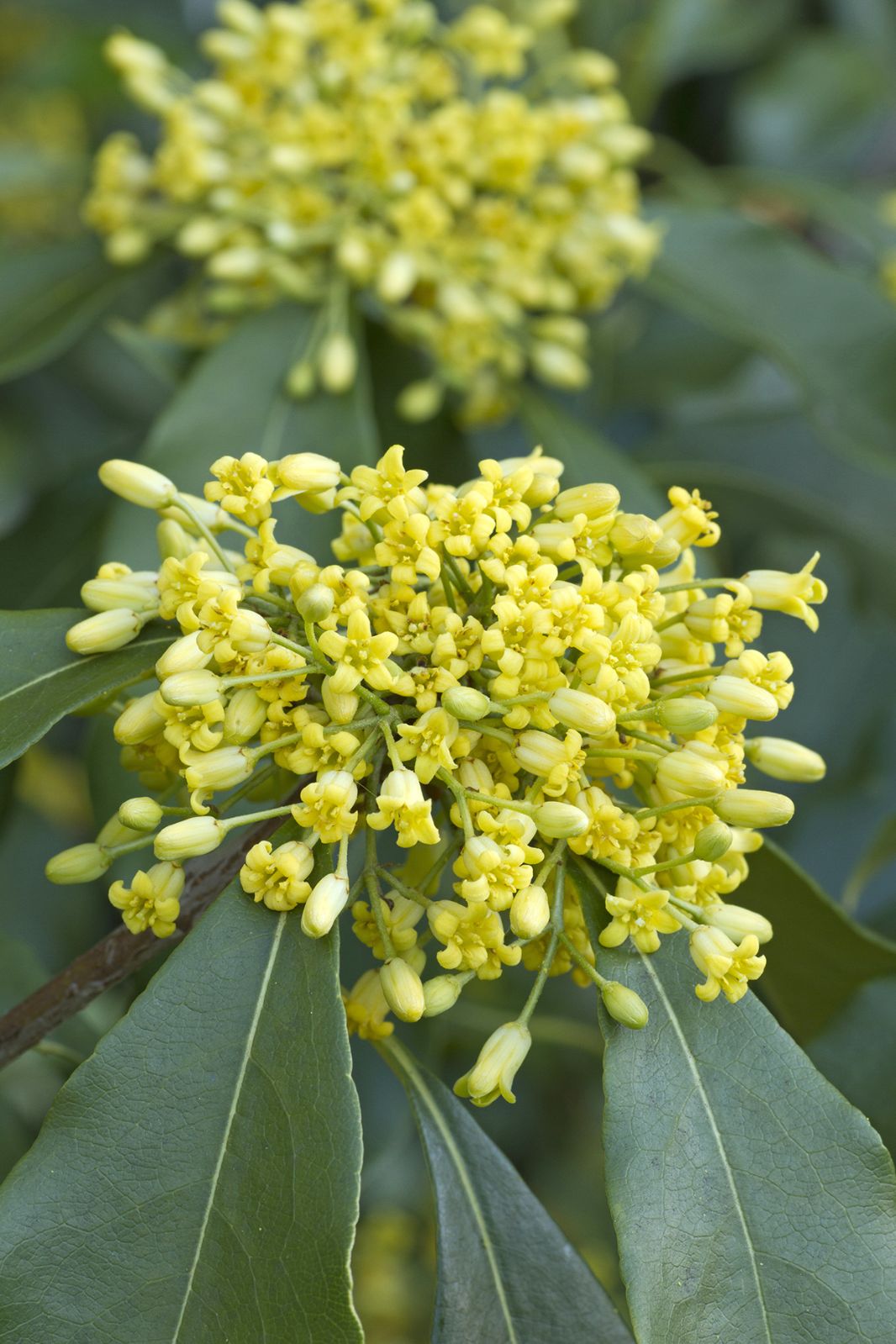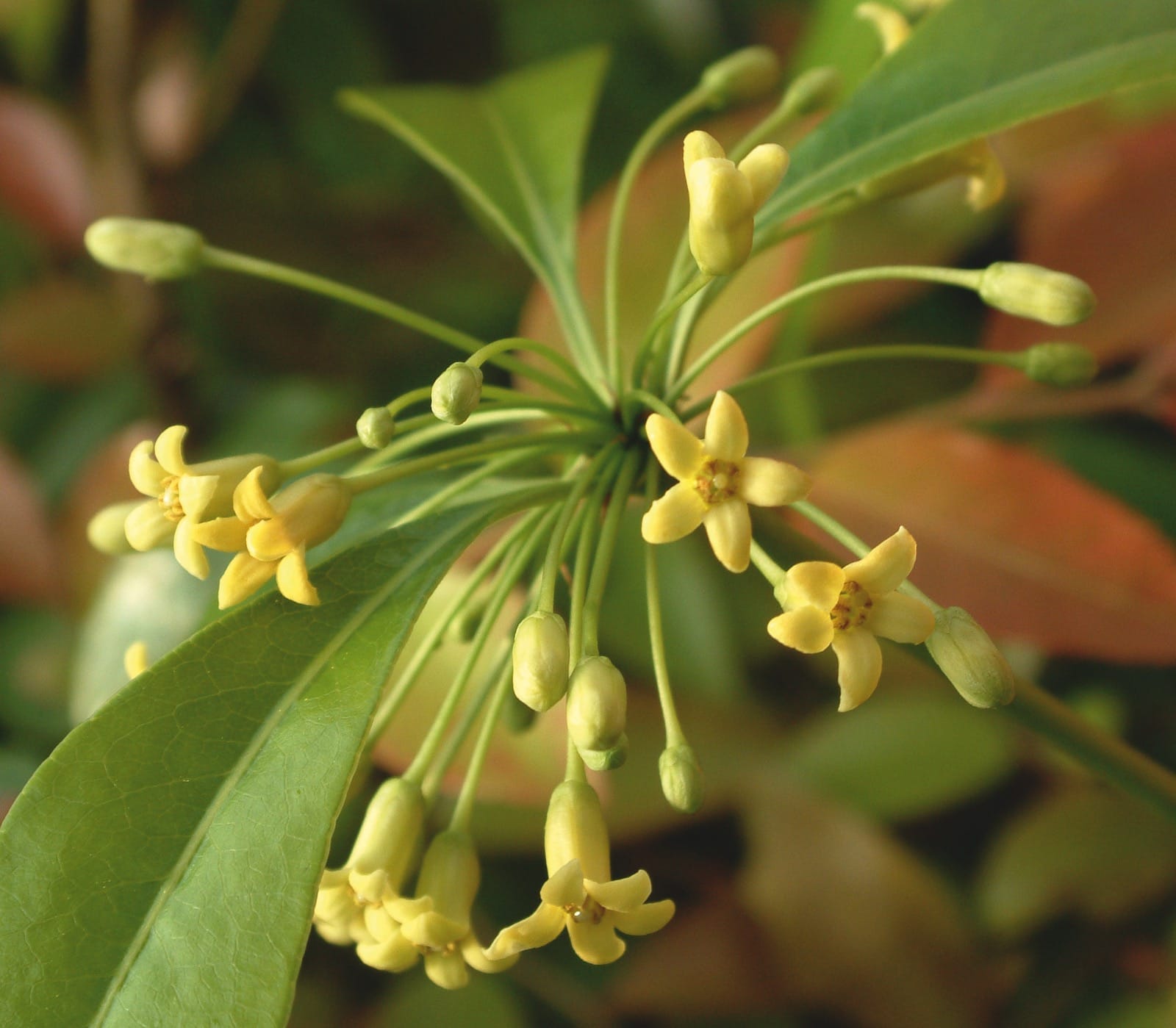Pittosporum brevicalyx
Credits
Article from New Trees by John Grimshaw & Ross Bayton
Recommended citation
'Pittosporum brevicalyx' from the website Trees and Shrubs Online (treesandshrubsonline.
Genus
Other taxa in genus
- Pittosporum adaphniphylloides
- Pittosporum bicolor
- Pittosporum buchananii
- Pittosporum colensoi
- Pittosporum cornifolium
- Pittosporum crassifolium
- Pittosporum dallii
- Pittosporum daphniphylloides
- Pittosporum divaricatum
- Pittosporum eugenioides
- Pittosporum glabratum
- Pittosporum huttonianum
- Pittosporum patulum
- Pittosporum phillyreoides
- Pittosporum revolutum
- Pittosporum rigidum
- Pittosporum tenuifolium
- Pittosporum tobira
- Pittosporum undulatum
Shrub or tree to 10 m, possibly more. Branchlets glabrous, or pubescent when young. Leaves evergreen (biennial), clustered at the tips of branches, 5–12 × 2–5 cm, thinly leathery, obovate-lanceolate, sometimes broader, upper surface glossy dark green, lower surface pubescent below when young, later more or less glabrous, 9–11 primary veins on each side of the midrib, margins entire, flat, apex acuminate; petiole 1–1.5 cm or more. Inflorescences in groups of three to five, in leaf axils at branchlet apices; corymbose, 3–4 cm long, finely hairy. Flowers hermaphrodite; sepals 2–2.5 mm, finely hairy; petals free, yellow, 0.6–0.8 cm long. Capsule subglobose, compressed, 0.7–0.8 cm diameter, dehiscing by two valves. Seeds 7–10. Flowering March to May, fruiting July to November (China). Zhang et al. 2003c. Distribution CHINA: Guangdong, Guangxi, Guizhou, western Hubei, Hunan, Jiangxi, Sichuan, southeastern Xizang, Yunnan. Habitat Forests and forest edges on limestone, or thickets in ravines and on slopes and cliffs, between 600 and 3500 m asl. USDA Hardiness Zone 8–9. Conservation status Not evaluated. Illustration Zhang et al. 2003c; NT632.
Pittosporum brevicalyx was introduced to western horticulture by the 1980 SABE team, from seed collected near the Golden Temple outside Kunming, Yunnan by Stephen A. Spongberg (SAS 26B). One of the resulting seedlings was successfully established at the Saratoga Horticultural Research Foundation, San Martin, California, and has been the source for most stock in cultivation (at least in North America), under the cultivar name ‘Golden Temple’. The original plant is now approximately 10 m tall (W. McNamara, pers. comm. 2004). This clone has become very well established in western American gardens and is valued for its dense evergreen foliage and masses of very fragrant yellow flowers (Wharton et al. 2005). It is also relatively drought-tolerant, in the experience of Bill McNamara (pers. comm. 2004) at Quarryhill at least. It sets copious seed and perhaps should be monitored for weediness.
Note added in 2023:
Pittosporum brevicalyx has flourished against a wall warm in the Strasbourg University Botanical Garden in eastern France since the late 1980s, rather surprisingly in a continental climate and suggesting that it has wider potential than generally considered. This specimen, considered to be one of the best anywhere in France, has achieved a height of 5 m and flowers reliably in May (Frédéric Tournay, pers. comm. 2023).


